In our pre-occupation with the coronavirus crisis, with a rising death toll, apparently unstoppable (27,370 on 28th March, 05 22 GMT), we should not fail to take note of an unhappy fifth anniversary of the war in Yemen, or more accurately, the war on Yemen, by its larger neighbor Saudi Arabia with a grim toll of over 100,000 human beings killed by their fellow human beings. In antiquity, what is now Yemen was known as Arabia Felix (Happy or Lucky Arabia) and the rest of the peninsula was known as Arabia Deserta (the Arabian desert).Yemen was more advanced as a civilization and it is believed that Queen Sheba went in search of King Solomon, either from Yemen or Ethiopia, as the two were at times united in a single kingdom, or in this case queendom.
On 24th March 2020, as the war raging in Yemen completed five years, the U N Secretary General wisely called on the contestants in the various civil wars and other wars that disfigure the face of the earth to agree to a cease-fire as the coronavirus crisis requires undivided attention and all the resources, material and spiritual, at the command of humanity. But his appeal seems to have fallen on deaf ears.The initial response from the Houthis and the ousted President Mansur Hadi, obviously with the concurrence of Riyadh, is positive. Do we dare to hope to see curtains fall on this unfolding tragedy anytime soon? To answer that question we need to go back in time.
Yemen and the Arab Spring
The Arab Spring started in Tunisia where in January 2011, President Ben Ali, in power for 23 years with rigged elections from time to time, fell from power. He was followed next month by Egypt’s Hosni Mubarak in power for 30 years, retaining it with suitably rigged elections. The next to fall was Muhammad Gaddafi in October, in power for 42 years, again not without rigged elections, but in a different manner. There was no direct election.
The Yemenis watching the fall of despots elsewhere in the Arab world persisted in their revolt against President Ali Abdullah Saleh (in power since 1978 in North Yemen and since 1990 in the united Yemen). The revolt had started in January 2011, but he was ousted from power only in February 2012. Saleh’s deputy Mansur Hadi was elected President in an election where he was the only candidate.
The departure of Saleh did usher in; it appeared for a while, an era of peace and tranquility when political parties came to the table for a National Dialogue Conference under UN auspices. A document was agreed to. However, Hadi lacked political navigational skills. He took unilateral decisions on the division of Yemen into six provinces that alienated the Houthis in the northern province of Saada. Hadi should have known that the Houthis who had carried out an armed rebellion from 2004 to 2010 with fits and starts had boycotted the election he won. They got support from Saleh who had retained much hold on the bureaucracy because he had parted with power rather reluctantly and wanted to see his son play a prominent role in politics in the post-Saleh Yemen.
Hadi increased petrol prices in July 2014 and the Houthis reinforced their revolt. By February 2015, the Houthis had taken over the capital Sanaa holding Hadi in detention in his palace. He managed to escape to Aden and from there reached Riyadh on 25th March 2015. The same day Saudi Arabia declared the start of Operation Decisive Storm (ODS), which in retrospect appears to be hardly decisive after five years of the storm.
Obviously, Riyadh had been planning the ODS for a while. The two countries have been at logger heads for decades over the border. But as Saudi Arabia had lent financial support to Yemen under Saleh and Hadi, it counted on a friendly, if not obedient government in Sanaa. The capture of Sanaa by Houthis, a Shia sect hated by the Sunni-majority Saudi Arabia, a sect that can count on the support of Iran, the bete-noire of the Saudis was a development that Riyadh wanted to reverse. In any case, Saudi Arabia is allergic to democracy in the neighborhood and had decided to carry out a short military strike, mainly bombing combined with a sea blockade that was meant to bring the Houthis to their knees in short order. The choice of the name ODS sums up the confidence of Mohammed bin Salman, the Defence Minister, who had the ear of his father, the King.
Thanks to its standing in the Arab world and its cheque-book diplomacy, Riyadh managed to get a respectable coalition (United Arab Emirates, Sudan, Bahrain, Kuwait, Qatar, Egypt, Jordan, Morocco, and Senegal). The UAE is the most important coalition partner.
But even more important than the members in the formal coalition is the support, military and diplomatic, from the United States and therefore from the rest of the West. For Trump, it is an opportunity to sell more arms to Saudi Arabia. The other powers, United Kingdom, Germany and France, to name only a few, were more than pleased to follow Washington’s lead and supply arms to Riyadh.
The UN Security Council also failed to do its duty. It passed a resolution (2216 of 14th April 2015) calling upon the Houthis to lay down arms and surrender at a time they were winning militarily. It is difficult to understand why anyone in the Council should have expected the Houthis to comply. It may be noted that Russia abstained.
The Houthis have the moral support of Iran. It is also possible that they have material support too from Iran. The question is how Iran could have sent in arms as there is a sea blockade. Perhaps, through Oman, Iran might have sent some material. Whatever that be, the fact is that the Houthis have been able to keep fighting.
The map below shows the current position on the ground:
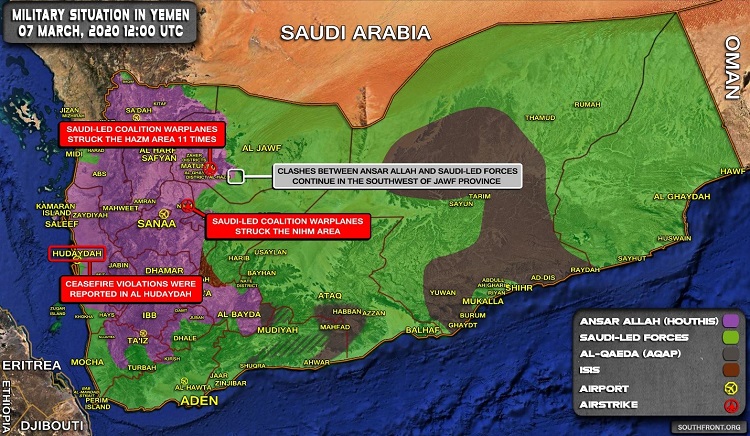
We should note the cracks in the Saudi-led alliance. UAE has supported those Yemenis who want an independent state in the south. Riyadh wants Hadi to be restored as President of the whole of Yemen. It is the personal friendship between the Crown Princes in the two monarchies that has prevented a formal breakdown of the alliance. It has been reported that some secret parleys have taken place between the Houthis and Riyadh. But, unless the differences between Riyadh and Abu Dhabi are sorted out it will be difficult to make progress towards a cease-fire.
The UN Secretary General has put in commendable efforts to restore peace. In December 2018 the two sides agreed in Stockholm to a cease-fire in Hodeida, an important port, facilitating the flow of humanitarian aid; exchange of prisoners; and to start negotiations with the support of UN towards an end to the conflict with efforts towards addressing the post-conflict situation. Alas, the Stockholm Accord was not implemented in full, mainly because Saudi Arabia did not want it.
The big picture is simple and also frightening. Let us look at that picture: First, it is clear beyond doubt that Saudi Arabia is chasing the mirage of military victory propelled by the military and diplomatic support of Washington and its Western allies. Second, Saudi Arabia has violated, till now with impunity, the international laws on war by bombing schools, weddings, and even funerals. According to Yemen Data Project, the Saudi-led coalition has killed 18,400 civilians, bombed hospitals and clinics 83 times, food stores 60 times, and water and electricity plants 134 times. Houthis too have attacked civilian targets, but the Saudi violations are more serious. Third, the Security Council has chosen to be blind and deaf.
This unfolding tragedy is more likely to be put to an end by exhaustion of the belligerents than by the return of good sense. For how long can Saudi Arabia carry on this unwinnable war given the declining oil prices? There was an attack on Saudi oil installations in September 2019 by the Houthis. That was on an Aramco plant in Abqaiq, bringing down the daily production by 5.7 million barrels a day, half of Aramco’s daily production. The Houthis too are facing shortages. Meanwhile, the worst humanitarian crisis as the UN has described it continues with cholera spreading and 24 million Yemenis in need of support.
(The paper is the author’s individual scholastic articulation. The author certifies that the article/paper is original in content, unpublished and it has not been submitted for publication/web upload elsewhere, and that the facts and figures quoted are duly referenced, as needed, and are believed to be correct). (The paper does not necessarily represent the organisational stance... More >>
Image Source: https://www.jpost.com/sites/default/files/BloggersImages/534%5C/image/Yemen-famine%20map-5.png

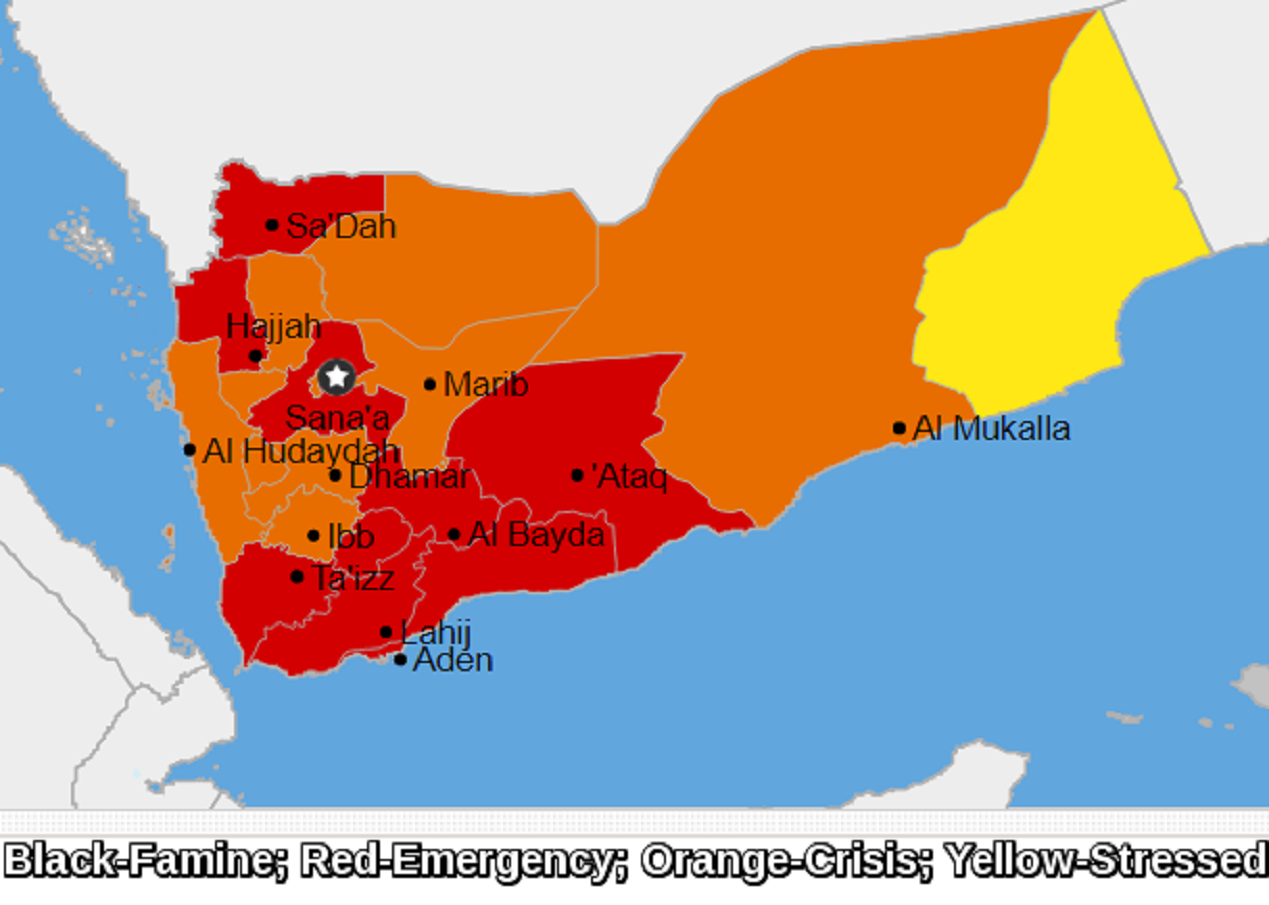
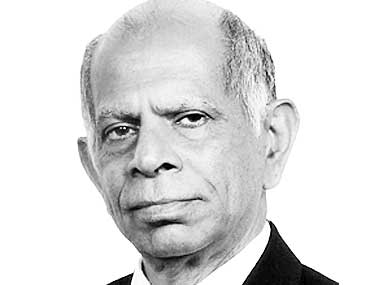



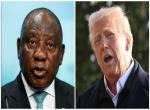


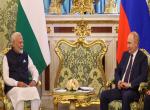

Post new comment